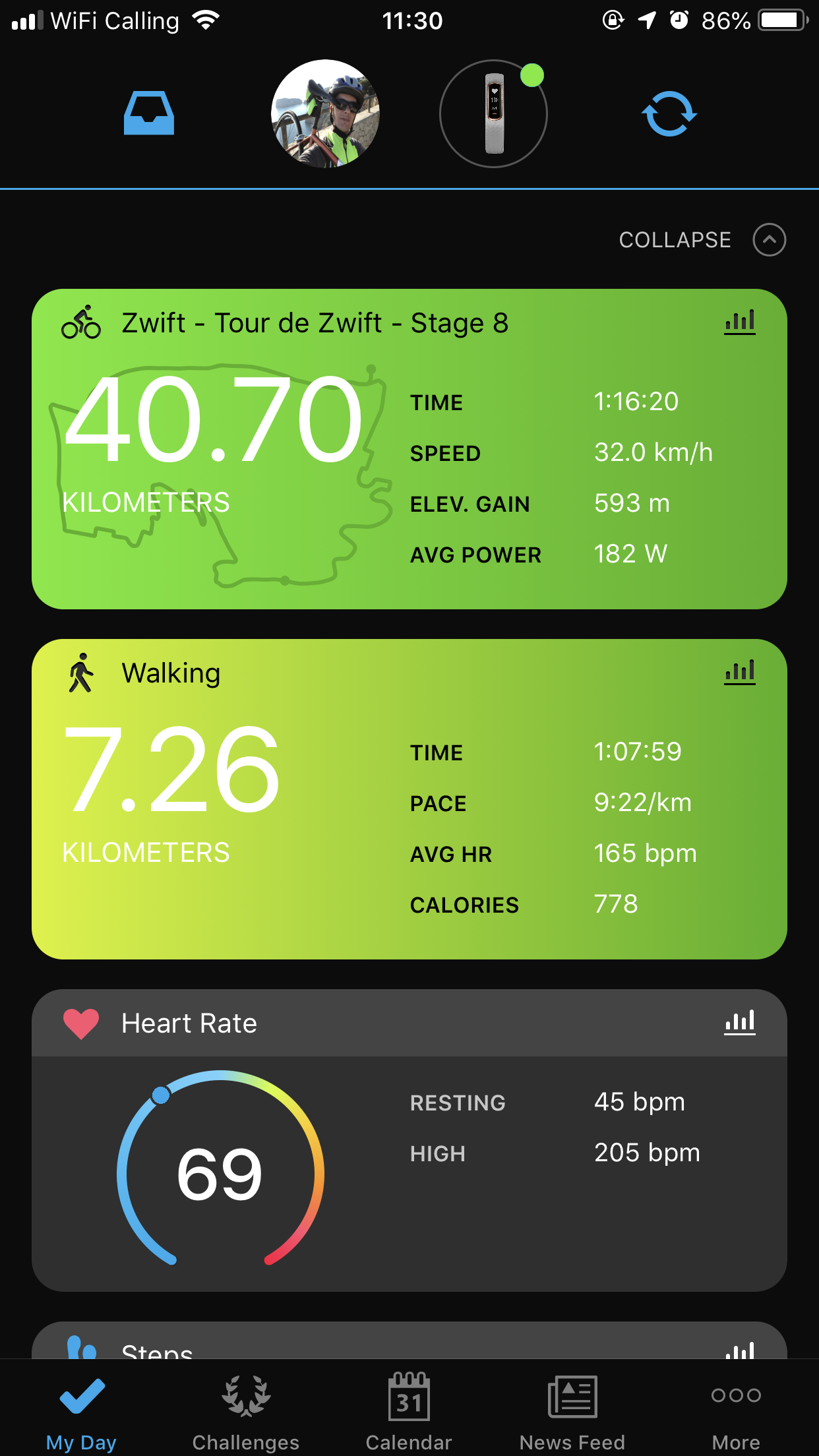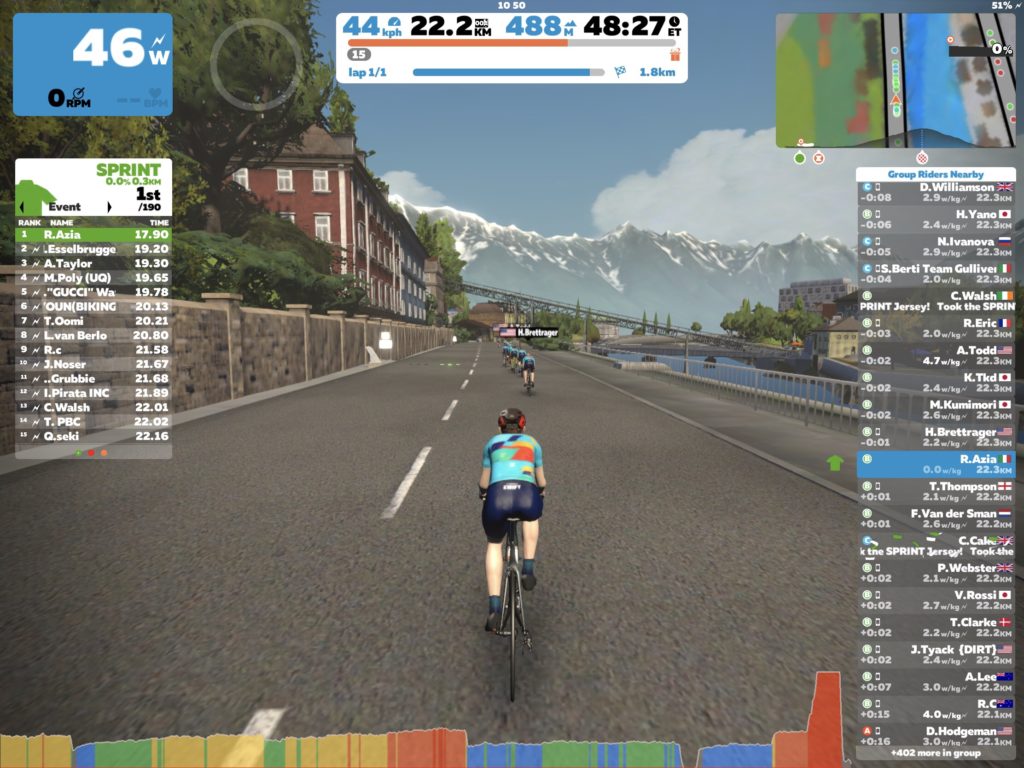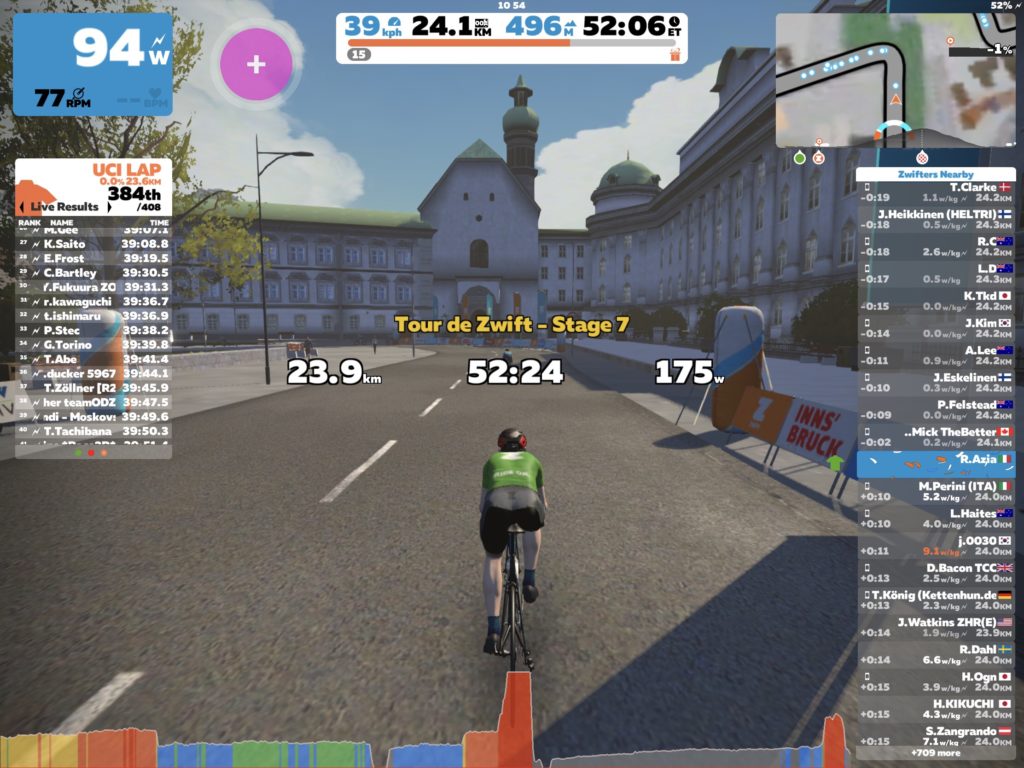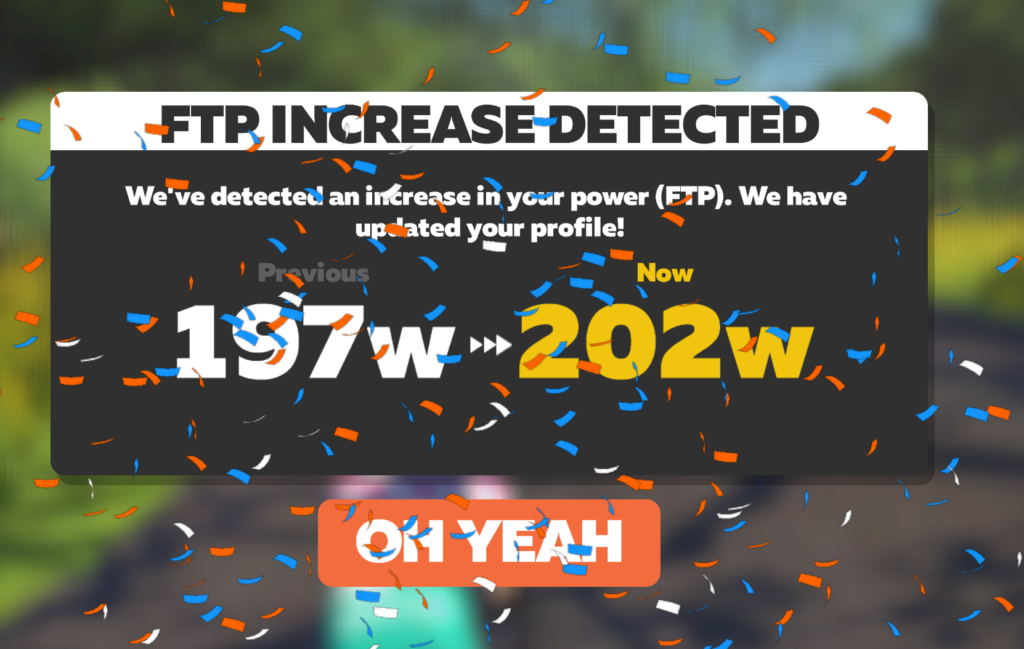Day 44 of Self-Isolation in Switzerland – A Zwift session
Today the weather was rainy so I had a Zwift session. I decided to cycle the Yorkshire circuit. Cycling indoors is not as exciting as you don’t see as much. I listened to a hiking podcast but I didn’t pay much attention to the Zwift interface for at least the first fifteen minutes or so.
For the first time in 44 days or more I started the car’s engine and went for a drive. I heard the engine making a slightly different noise than usual so I let it warm up a bit and then I drove to the shops taking the long route. By long route I simply mean the walk that I’ve done dozens of times. It’s around 10 kilometres of driving in total. As it’s a diesel car it makes sense to drive far enough to get the engine warmed up and ready for when life returns to “normal”.
Strava have an article about mental health today. They called it Looking After Your Mind.
1. Focus on your sensory perception.
To switch off during sport, try to designate ten minutes of your run or ride to consciously focus on the world around you. What do I smell, hear, see and feel during exercise? Focusing on the here and now gives a feeling of security and makes conscious enjoyment possible.
With all of the pictures, descriptions of smells and even river walking I think I’ve definitely lived up to point 1. I have been running, cycling, walking, river walking and exploring variants on the routes I walk often. I can now walk without crossing people for ninety eight percent of my walks. People in cars don’t count.
I have spent a lot of time on TikTok which is both good and bad. It’s good because it cheers me up and now I’m familiar with another video sharing platform for when I’m applying for jobs but it’s bad because I could do more during the day.
Let’s see what tomorrow brings.















